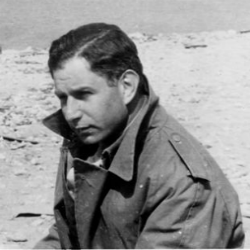
What is more intriguing is the history of how science came to have its place in government. There have been chief scientific advisors to government since the 1960s, the first being Solomon ‘Solly’ Zuckerman, as recounted in his two volumes of autobiography. His step into government advice came from advising the Air Ministry about bombing during the Second World War, but he came as an advisor, not as a scientist. However, he was a consummate scientist and even continued research before being persuaded into the full time science advisory role.
Beginning as an anatomist, principally of wild mammals, being brought up in South Africa, he moved to London to study medicine. Publishing scientific papers, on the reproductive behaviour of apes such as the baboon, he established a research rather than clinical career. He became at the age of 23 a researcher (the prosector) at the Zoological Society of London (owners of the London Zoo and indeed where the term 'zoo' originates). Proceeding to Yale and then Oxford, he established some reputation for experimental studies of anatomy, to link it to physiology.
As the war intervened, he and colleagues decided that science should aid in their efforts and undertook to study the anatomical effects of explosions. He recounts that at that time it was believed that a blast killed by entering through the mouth and damaging the lungs internally. He was able to demonstrate that the blast wave did indeed act on the lungs but by compressing the chest externally. The only other damage to be suffered was to rupture ear drums, when the explosion itself was not destructive, but it could also cause associated structures damage causing their collapse.
Zuckerman was soon visiting towns after air raids to study the damage of bombs and to talk to survivors, the controlled tests on animals not giving the information he wanted. Thus he began the scientific studies of the 'bombing survey unit' which were to consider the value of different types of ordinance and their destructive capability against different targets. Speculation on the effects of bombing on civilian morale was rife and unsupported by evidence which showed considerable resilience and also some commuting. These ideas, air power and wound ballistics, had never before had serious study and the presence of science in armed forces operations was a curiosity.
Thanks to initial success, Solly was able to ask to study the effect of aerial bombing in North Africa, eventually given the rank of Honorary Group Captain in the RAF. He advised on the strategy for bombardment of an Italian island and his querulous tone is apparent in reporting the lack of challenge to his arbitrary assumptions about bomb damage. But what is so creditable about his work that he always followed immediately on the ground (sometimes without official approval) to evaluate the effects of the strategy employed. In the case of Italian gun batteries, analysis was straightforward, but results unexpected: it was command posts being destroyed rather than the guns themselves which did the damage.
Invading Italy through Sicily it became clear that damage to parts of the railway network was much more effective than attempts at precision bombing. Indeed the use of air power was not understood in military circles beyond fighter battles and a vague concept of long range artillery which grossly misrepresented bombing accuracy. But the command divide between operational support for ground troops and strategic bombing of key facilities proved insurmountable, leaving no room to reduce enemy capacity in an imprecise but concerted strategy. Thus being returned to Britain to assist in planning air strategy ahead of the D-Day landings, he started to clash with military authority.
In retrospect, this was clearly the beginnings of systems theory of networks, which he conceptualised like biological systems. At the time, the potential for damage to a network rather than to specific locomotives or pieces of line was not appreciated. But neither did Zuckerman grasp until afterwards the dependence of German industry on rail for transport of components and raw materials between factories. Many people claim to have had ideas which would have shortened the war, but Solly is unusual in being vindicated by intercepted communications from Albert Speer. However, he was also unusual in briefings where he was the only person basing their argument on any evidence at all.
The size of operations in the Second World War was not so novel as the opportunity for coordination afforded by communications and technology such as radar. Thus it might not be so surprising that scientific direction and empirical basis was an unwelcome challenge to the chain of command. In any case systems theory still provides challenges to conventional thinking today. But what was not appreciated was that practical details, such as the fusing of bombs, could make big differences to military outcomes.
Part two of this article, 'Reinventing the scientific generalist' can be read here.



